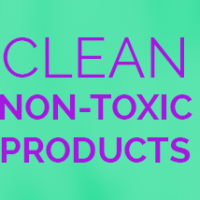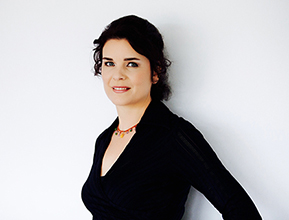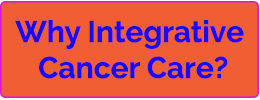 How do you live a clean non-toxic lifestyle? Explore resources about what you put in your body, on your body, and around your body into your environment both inside and outside your home. Everyone needs this information with these lifestyle choices, especially cancer patients and cancer caregivers.
How do you live a clean non-toxic lifestyle? Explore resources about what you put in your body, on your body, and around your body into your environment both inside and outside your home. Everyone needs this information with these lifestyle choices, especially cancer patients and cancer caregivers.
Clean Non-Toxic Products for Personal Body Care
The products you put on your body—into your mouth, on your skin, and hair—must be clean and green. Your skin is your largest organ for the purpose of detoxification. The ingredients in your products should be non-toxic to support your health. You are worth it. Visit the Environmental Working Group (EWG) Skin Deep Cosmetics Database to search specific personal care products and ingredients.
Household Cleaning Products
Household cleaning products impact the surface area where you apply them and the air in your home. If it smells toxic, it is toxic. Consider using clean and green household products for your body and environment.
Some Clean Green Products
- Seventh Generation
- Biokleen
- EcoVer
- Mrs. Meyers
- Planet
- Green Works
Plastics
Research indicates that Bisphenol A (BPA) and Phthalates are two key ingredients in plastics that cause severe ill health effects. Both BPA and Phthalates should be avoided to reduce cancer risk and support optimal health. BPA is found in water bottles, baby bottles, plastic tableware, reusable food containers, infant cups and cans, jar lids, CDs, and other products. Phthalates are found in hair products such as shampoos, conditioners, and hair sprays, body sprays, soap, colognes, perfumes, food packaging, shower curtains, nail polish, tubing used for medical products, IV bags, vinyl flooring, wall coverings, and time-release pharmaceutical coating. Read your labels.
Some Clean Green Products
- Instead of plastic bottles, buy stainless steel bottles and glass food storage containers. If you choose to purchase plastic, look at the recycle number on the bottom of the item. A number 7 indicates a container with BPA unless the product states otherwise.
- Do not buy foods in aluminum containers. Choose glass containers if available. Frozen foods are another option. Fresh foods are the best choice.
- Do not microwave. If you insist on microwaving, use glass instead of plastic containers.
- Do not put hot liquids into BPA plastic containers.
Cooking Pans
Ingredients in many cooking pans leech into foods, the body, and the air around you.
Some Clean Cooking Products
- Stainless steel
- Cast iron
Clean Clothes, Bedding, and Furniture
Natural, organic materials in clothes, bedding, and other items do not pollute people or the environment. Some product lines offer 100 percent chemically untreated cotton that breathes more easily than synthetic fibers and does not emit toxic vapors from pesticides used in growth or manufacture. Conventional cotton production uses about one-quarter of the world’s chemical pesticides and fertilizers. Other fabrics such as polyester may be treated with formaldehyde. Furniture may also contain toxins such as formaldehyde and synthetic adhesives. Find non-toxic products.
Everyday Products
Toxic ingredients are in other everyday products, including for children, toys, apparel and accessories, cars, and more. Healthy Stuff features a searchable database of more than 5,000 products with additional information.
Water
The largest component of the body is water. Hydration with clean, filtered water is necessary for health.
Clean water does not contain heavy metals, pesticides, microbes such as bacteria, viruses, fungi, and protozoa, pharmaceutical drugs, plastics and their chemical derivatives such as phthalates and bisphenol A, as well as other chemicals and toxins.
The U.S. Environmental Protection Agency (EPA) requires all water systems to give their customers an annual Consumer Confidence Reports. Tests demonstrate that tap and well water is often contaminated with toxins. EWG has ratings on water utilities in the United States.
Water in many plastic bottles in unsafe. Plastic bottles contain phthalates and bisphenol A featuring toxic petrochemicals associated with illnesses such as cancer.
Some Clean Water Products
- Reverse Osmosis Filters
Water Quality
- Environmental Protection Agency Office of Ground Water and Drinking Water
- Environmental Protection Agency Safe Drinking Water Information System
- Environmental Working Group Tap Water Analysis & Tap Water Database
- NSF International, The Public Health and Safety Company
Air
Breath is our life force. Respiration gives us life. Clean air without harmful substances is essential to health. According to EPA, indoor air can be two to five times more polluted than outdoor air. Contaminated air stresses the body. Air without chemicals, gases, particles, and odors, including formaldehyde, polybrominated diphenyl ethers (PBDEs), dust, mold, pollen, tobacco smoke, various chemical vapors, gases, viruses, bacteria, and other substances, allows the body to breathe in clean air and utilize oxygen for optimal healthy functioning. Consider acquiring air diffusers in your home.
Electromagnetic Fields
The air, and your health, is also impacted by electromagnetic fields with radiofrequency radiation and microwave exposures. Chronic, low-level exposures from cell phones, cell towers, power lines, cordless phones, wireless connections, and microwaves have been associated with harm, especially to children. Impaired concentration, learning, attention, memory, fatigue, and adverse changes in behavior and sleep patterns from exposures have been documented. Power line EMF exposure has been linked to childhood leukemia. Other health risks have been documented from exposure to wireless technologies, including cell and cordless phones.
You can limit exposures to cell phones, cordless phones, wireless connections, and microwaves. Cell phones can be used with a wired earpiece or headset (a hollow tube is preferable), or on speakerphone mode. Corded phones can be used over cordless phones. Internet connections can be made through a cable. A toaster-oven or stove can be used for heating.
- Collaborative on Health and the Environment Working Group Electromagnetic Fields listed in ScienceServs
- Safer Phone Zone about the association between cell phones and health issues
Dry Cleaning
Several new technologies do not use cancer-causing chemicals in their dry cleaning methods. Try to find a clean and green dry cleaner in your area.
For More Information





